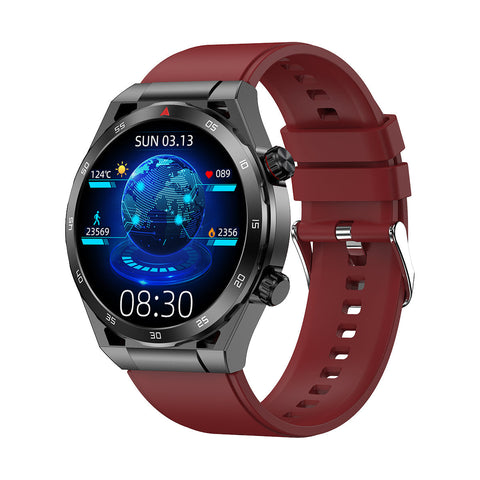Reverse Running: What to Know Before Giving It a Go
Imagine yourself running backward through a park or on a treadmill. It may seem unconventional, but reverse running, also known as backward running or retro running, has been gaining popularity in the fitness world for its unique benefits. In this blog post, we'll explore what reverse running is, its potential benefits and risks, and what you need to know before giving it a try.
What is Reverse Running?
Reverse running involves moving backward at a pace similar to running forward. While it may seem strange at first, the movement engages different muscles and challenges your coordination and balance in new ways. Reverse running can be done outdoors on flat terrain or indoors on a treadmill with caution.

Potential Benefits of Reverse Running
-
Muscle Activation: Reverse running engages muscles differently than forward running, particularly the quadriceps, hamstrings, and calves. This can help balance muscle development and prevent overuse injuries associated with forward running.
-
Improved Balance and Coordination: Running backward requires greater focus and coordination to maintain balance and avoid obstacles. Over time, this can enhance proprioception and spatial awareness, potentially reducing the risk of falls and injuries.
-
Joint Health: Reverse running may be gentler on the joints compared to forward running, as it reduces impact forces on the knees and ankles. This makes it a suitable option for individuals with joint pain or injuries seeking a low-impact alternative to traditional running.
-
Calorie Burn: While the calorie burn of reverse running may vary depending on factors like speed and duration, it can still provide a challenging cardiovascular workout and contribute to overall calorie expenditure.
Potential Risks and Considerations
-
Risk of Falls: Reverse running poses a higher risk of tripping or falling compared to forward running, especially when done outdoors on uneven terrain. It's essential to practice in a safe environment with clear visibility and minimal obstacles.
-
Reduced Visibility: When running backward outdoors, visibility may be limited, increasing the risk of collisions with obstacles or other individuals. Choose well-lit areas with minimal foot traffic and use caution to avoid accidents.
-
Coordination Challenges: Reverse running requires greater coordination and proprioception than forward running. Beginners may experience difficulty maintaining balance and rhythm initially, so it's essential to start slowly and gradually increase intensity.
-
Neck Strain: Constantly looking over your shoulder while running backward can strain the neck muscles and lead to discomfort or injury. Be mindful of your neck alignment and periodically check your surroundings without excessive twisting.
Tips for Getting Started
-
Start Slow: Begin with short intervals of reverse running and gradually increase the duration and intensity over time as you become more comfortable and confident.
-
Focus on Form: Maintain an upright posture, engage your core muscles, and keep your gaze forward to improve balance and stability while running backward.
-
Choose the Right Surface: Opt for smooth, flat surfaces when starting out to minimize the risk of tripping or falling. Avoid uneven terrain or areas with obstacles until you feel more comfortable with the movement.
-
Listen to Your Body: Pay attention to any discomfort or pain while reverse running and adjust your technique or intensity accordingly. Stop if you experience any sharp pain or unusual symptoms.
Reverse running offers a unique and challenging way to improve cardiovascular fitness, balance, and muscle strength. However, it's essential to approach it with caution and gradually build up intensity to reduce the risk of injury. By following these tips and listening to your body, you can safely incorporate reverse running into your fitness routine and reap its potential benefits. So, lace up your shoes, and give reverse running a try—you may be surprised by how much you enjoy the backward journey!
In today's fast-paced world, staying connected and tracking fitness goals has become increasingly important. Enter the smartwatch - a revolutionary piece of wearable technology that combines the functionality of a traditional watch with the features of a smartphone. Smartwatches offer a myriad of benefits, from keeping you informed of notifications and calls to monitoring your health and fitness metrics in real-time.












